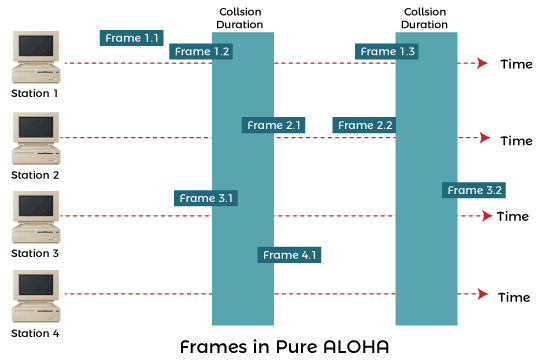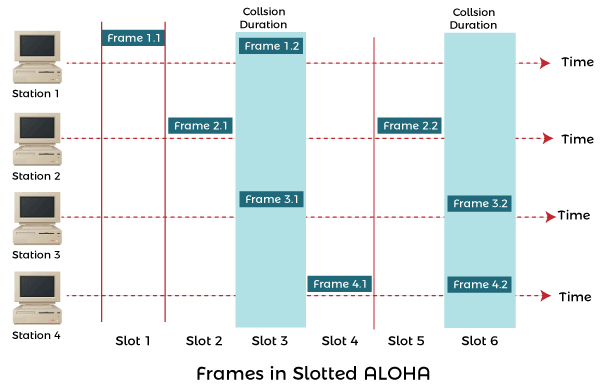Difference between Pure aloha and Slotted alohaIn this article, we will discuss the comparison between Pure aloha and Slotted aloha along with their separate discussion. Aloha is the random access protocol having two categories that are pure aloha and slotted aloha. Pure aloha is used whenever data is available for sending over a channel at stations, whereas slotted aloha is designed to overcome the problem of pure aloha because there is a high possibility of frame hitting in pure aloha. Similarly, we will see the comparison chart between pure aloha and slotted aloha. So, without any delay, let's start the topic. Before discussing the types of aloha, let's first see a brief description of aloha. What is aloha?Aloha is designed for wireless LAN (Local Area Network) but can also be used in a shared medium to transmit data. In aloha, any station can transmit data to a channel at any time. It does not require any carrier sensing. Pure AlohaPure aloha is used when data is available for sending over a channel at stations. In pure Aloha, when each station transmits data to a channel without checking whether the channel is idle or not, the chances of collision may occur, and the data frame can be lost. 
When a station transmits the data frame to a channel without checking whether the channel is free or not, there will be a possibility of the collision of data frames. Station expects the acknowledgement from the receiver, and if the acknowledgement of the frame is received at the specified time, then it will be OK; otherwise, the station assumes that the frame is destroyed. Then station waits for a random amount of time, and after that, it retransmits the frame until all the data are successfully transmitted to the receiver. Slotted AlohaThere is a high possibility of frame hitting in pure aloha, so slotted aloha is designed to overcome it. Unlike pure aloha, slotted aloha does not allow the transmission of data whenever the station wants to send it. 
In slotted Aloha, the shared channel is divided into a fixed time interval called slots. So that, if a station wants to send a frame to a shared channel, the frame can only be sent at the beginning of the slot, and only one frame is allowed to be sent to each slot. If the station is failed to send the data, it has to wait until the next slot. However, there is still a possibility of a collision because suppose if two stations try to send a frame at the beginning of the time slot. Pure aloha v/s slotted aloha
Now, let's see the comparison chart between pure aloha and slotted aloha. We are comparing both terms on the basis of characteristics to make the topic more clear and understandable.
ConclusionFrom the above discussion, it can be said that slotted aloha is somewhat better than pure aloha. It is because there is less possibility of collision in slotted aloha. So, that's all about the article. Hope it will be helpful and informative to you.
Next TopicDifference between
|
 For Videos Join Our Youtube Channel: Join Now
For Videos Join Our Youtube Channel: Join Now
Feedback
- Send your Feedback to [email protected]
Help Others, Please Share










